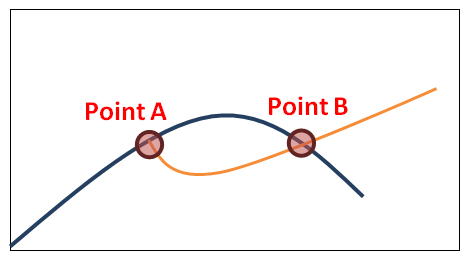How a voluntary change now can help ward off trouble later
Contributed by Teal McAteer, Associate Professor, Human Resources & Management with Kristine Leadbetter, Advancement Officer
 A three part mini-series on voluntary change
A three part mini-series on voluntary change
Part I – Why in 2014 we need to deliberately give ourselves a kick in the pants
We await the beginning of a new year with such anticipation, the fictitious promise that it will somehow bring happiness and answers to all of our quandaries, that as the clock strikes midnight we will be changed and our problems with us… We read about new year resolutions and fresh starts, we have this adrenalin that builds and builds; and then, inevitably, falls.
The new year is often full of negativism and self-reflection. It is a difficult time period as we consider the past year and wonder about the course ahead. As we are now arriving at the end of the first quarter, we are beginning to reflect on our progress from our new year resolutions and goals we planned. We had made these with such determination and fortitude, the beliefs that we will make positive changes and follow through with our pledges. However the average, self-reported new year resolution success rate is only 8% according to a study published in 2014 in the Journal of Clinical Psychology1.
So why is it that we cannot make these changes? In many cases it just feels like there’s a mountain in front of us and we simply don’t know where to begin. The vast majority of change personally and professionally comes involuntarily, meaning, it happens TO US. So what do we do when this happens? If we’re struggling we set out to get support. Be it through self-help books, talking to good friends, or professional assistance. However the point is we’ve already been “knocked”, we’re reactive, “help me get through this”. But the trick for going forward in 2014 is that corporately and personally we learn to give ourselves a kick in the pants. We must learn to deliberately shake things up in order to survive and flourish.
Looking at the Sigmoid curve2. At what point do we typically make change?
Sigmoid Curve | Figure 1

In Figure 1, the blue line represents us. Here we are going along in life… school, dating, career, marriage, kids, and everything is going great! …but it isn’t always going to be like that. We’re naturally evolving people and there are factors that come into play to enforce change. The Sigmoid curve identifies when we as humans and organizations should make change versus when we actually do make change.
Typically as things are headed upwards (think career, marriage, promotion) we don’t make changes, but as they start to head downwards (POINT B) this is when we characteristically make change. We wait until things are negative, we wait to be stuck, until we start to see things fall, until the relationships have gone sour, until the business is failing, and generally until things are spiralling downwards before we start to initiate changes.
Sigmoid Curve | Figure 2

We realize that, although we know things are going well right now, we also know that they can’t always continue in that direction. In figure 2 the green line demonstrates that if we make a change at POINT A, we may hit a bit of a dive initially, but ultimately by being continually evolving, we can catch our next wave and keep building momentum in our success, satisfaction and happiness. Otherwise we run the risk of falling and sinking much lower. For most, we are stuck on “Point B” changes. We ride the waves instead of catching them. We wait for the next ball to drop, hitting rock bottom in order to motivate ourselves to make changes personally and professionally.
Do we make the voluntary changes we need or do we wait for the external indicators to make ourselves change. Do you wait for point B?
The world today is a fast paced environment. We have constant technological developments and an influx of options which create a continually changing dynamic in the workplace; the way we execute our jobs and the way we interact with our relationship circles. This creates a leanness of organizations, higher job expectations, and the continual ambition to be on top and a leader in your field. We must constantly be re-evaluating ourselves. In order to survive, we must purposely shake things up, we cannot wait, and we must embrace this as a never-ending cycle in our lives, to always be in a state of change.
Join us next month for the second edition of our three part mini-series of “Voluntary Change”. PART II – So how do we recognize when we need to shake things up?
1 http://www.statisticbrain.com/new-years-resolution-statistics/
2 The Age of Paradox by Charles Handy. Cambridge, MA: Harvard Business School Press, 1994. xiiii, 305 pp.
Dr. Teal McAteer is an Associate Professor in Human Resources and Management at the DeGroote School of Business, McMaster University. Dr. McAteer specializes in the areas of Leadership Development: Change and Stress Management, and Strategic Career Development.
Dr. McAteer maintains her own coaching practice offering change, stress, and career management services to organizations and on an individual basis. Her primary emphasis continues to be in helping people articulate their goals for change in their personal and professional lives, establish specific action steps with time lines, anticipate barriers to change, initiate measures to ensure accountability for actions, and embed progress measures to reach change success. To find out more about Dr. McAteer’s coaching sessions, you can contact her at mcateer@mcmaster.ca.

A very thought provoking article. I can’t wait until next month.
Thanks Mike.
I think you will find the next two articles very helpful in terms of putting some of these thoughts into action!
Dr. T